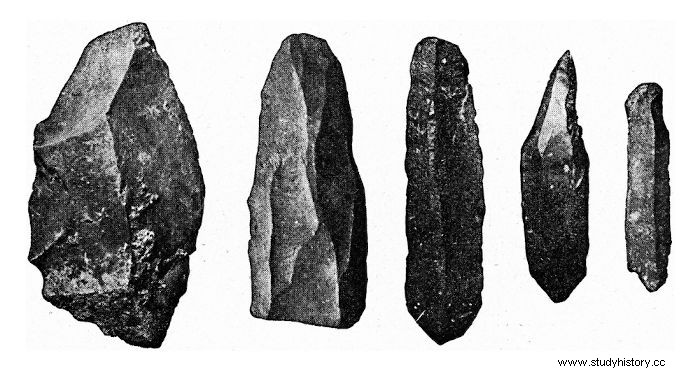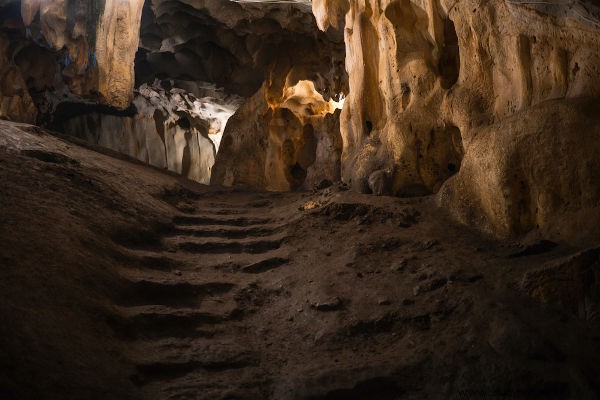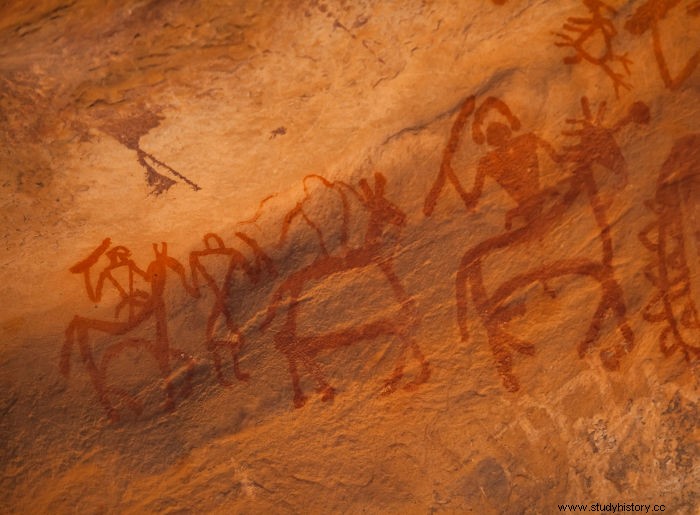The Paleolithic is a period of prehistory that extended from 2.6 million years ago to approximately 10,000 BC. (or 12 thousand years ago). During this period, hominids used stone to produce tools necessary for their survival. The Paleolithic was also known as the Stone Age.
The period in question was also marked by its artistic productions, highlighting cave paintings and small works of sculpture. Historians believe that prehistoric art could be part of man's everyday record as well as have ritualistic purposes. Man's sedentarization marks the end of that era.
Login also :Chauvet Cave - one of the main cave painting sites in the world
Prehistory Division

The Paleolithic is a period that is part of what is known as Prehistory, that is, the entire period of development and evolution of man before the emergence of writing . Traditionally, Prehistory was divided into two phases , known as Paleolithic and Neolithic .
The difference between them is basically in the degree of sophistication of the groups Hominid (which includes all types of great apes and humans) and Homo (which includes all humans, including the moderns—Homo sapiens sapiens, which is us) in each. In the Paleolithic, instruments were made of stone chipped, and man was nomadic; in the Neolithic, man sedentary and went on to produce polished stone instruments .
However, for some areas of Eurasia, prehistoric experts claim that there is a third period called the Mesolithic . It took place between 13,000 BC. and 9000 BC, in some regions that underwent major glaciations, and indicates a time of transition in human lifestyle between the Paleolithic and Neolithic.
Chronologically, the periodization is as follows:
-
Paleolithic :from 2.6 million years ago to 10,000 BC
-
Mesolithic :between 13,000 BC and 9000 BC
-
Neolithic :between 10,000 BC and 3000 BC
If you're interested in the period following human evolution from when hominids started using stone tools, read:Prehistory.
Paleolithic Periodization
The Paleolithic, in turn, is fragmented by specialists in the area into three moments, which are:
-
Paleolithic Lower :from 2.6 million years ago to 250,000 years ago;
-
Paleolithic Medium :from 250,000 years ago to 50,000 years ago;
-
Paleolithic Superior :from 50,000 years ago to 12,000 years ago.
This subdivision is used to facilitate the study of the Paleolithic and to help us identify the changes that occurred over its lifetime. These are approximate dates , and human development in the different places that housed human beings was not uniform . Thus, in some of them, technological development was much slower than in others.
Also see: Food in Prehistory and Evolution
Paleolithic features
As we have already seen, the Paleolithic spanned from 2.6 million years ago to 10,000 BC, so 12,000 years ago. This term was created in 1865 by John Lubbock , an archeology enthusiast who coined it from two Greek words:palaios , which means “ancient”, and lithos , which means "stone". Thus, the junction of the two Greek words gave rise to the term “Paleolithic”, which can be interpreted as the Stone Age.
Paleolithic is marked by conditions rustic in which hominids survived. First, this survival depended on hunting from animals and the collection from fruits and roots in nature. This lifestyle based on hunting, fishing and gathering means that man was nomadic , that is, it always moved around.

This change was due to the search for places with conditions more appropriate climates and in which the amount of resources was abundant. As at certain times the Earth's temperature was quite cold, even more so compared to the current one, hunting also fulfilled another purpose:obtaining the skin of animals to create clothes and protect themselves from the cold .
From a material point of view, man's survival has slowly improved as observation and experimentation allowed him to develop his tools. An important moment was when he discovered fire , which happened about a million years ago.
With the mastery of fire, man could cook food that he obtained, happened to have a place to keep warm and he was able to use that element to ward off dangerous animals . Archaeologists say that the discovery of fire was important even from a social point of view , as it allowed human groups to group and socialize with each other.
The objects used by man were produced from stone , bone , and wood . In the case of stone, the technique used was chipping, which is why the Paleolithic is known as the Stone Age. With time and the increasing sophistication of techniques, man began to produce more complex items, such as hooks , needles , blades etc. The tools produced were used to protect against dangerous animals, hunting, among other activities.
Archaeologists have created a classification that typifies Paleolithic stone instruments in different styles, which are:
-
Olduvaiense
-
Acheulean
-
Musterian
-
Aurignatian
-
Microlith
Many of the groups that lived in the Paleolithic lived in caves to survive, while others preferred to pitch tents using wood, bones and animal skin. The caves were the site of one of the main representations of individuals from this phase, rock art.
Read more :Mesopontamia - region that received the first civilizations in history
Paleolithic art

In the Paleolithic it is already possible to identify the first artistic manifestations of the men. They began to be carried out around 40 thousand years ago, therefore, in the period of the Upper Paleolithic , when there was already a greater sophistication of hominid groups.
It is not known exactly which group initiated the first Paleolithic artistic manifestation, but historical dating opens up the possibility of Neanderthal man (a species of hominid extinct 28,000 years ago) to have been the first hominid to have made artistic records. The most famous example of prehistoric art is the rock paintings .

These paintings were made on the walls of caves, and who made using materials such as blood, earth and coal. Scenarios were recorded that illustrated the daily life of man prehistoric, such as groups of men (or hominids) hunting, scenes of groups in social life and even scenes of sexual intercourse between them.
There are cave paintings scattered all over the world, including Brazil. Here the best known place with cave paintings is the Serra da Capivara National Park , located in the state of Piauí. In the Paleolithic, sculptures were also produced, and the best known example is that of the statuettes from Venus , understood as part of the fertility cult.
Image credits
[1] M Selcuk Oner and Shutterstock
